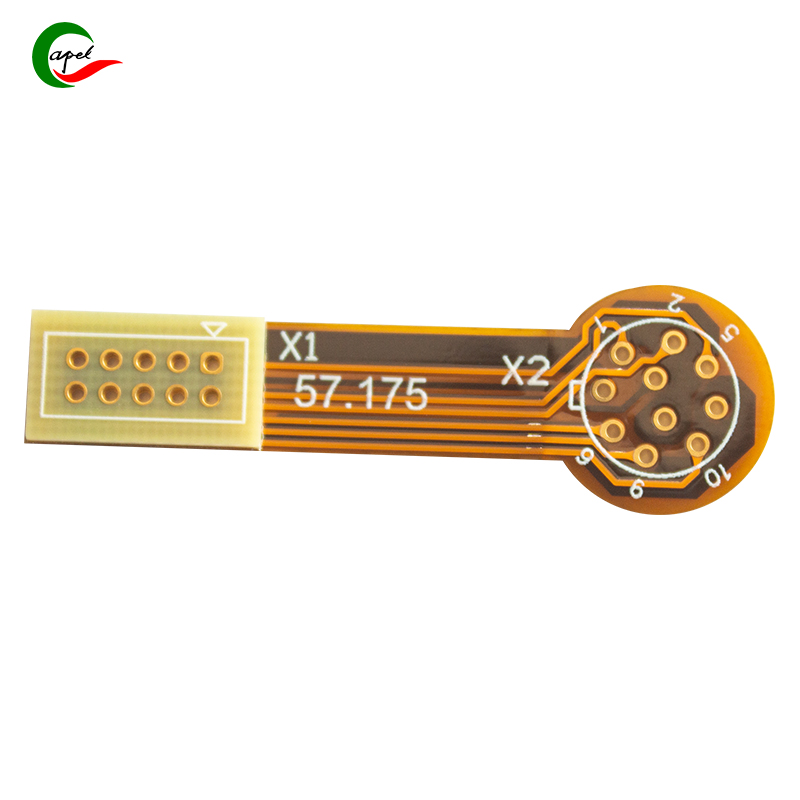Date: 2025-10-11
When it comes to medical technology, the evolution of flexible printed circuits has quietly revolutionized how we approach patient care. As someone who's worked with medical device manufacturers for over a decade, I've seen firsthand how FPCs have enabled breakthroughs that were once considered impossible.
Where Flexible Circuits Make the Difference in Healthcare
Wearable Medical Technology
The rise of continuous health monitoring has been largely powered by flexible circuits. Take continuous glucose monitors (CGMs), for example. The FPC inside these devices needs to be incredibly thin - we're talking about 0.08mm thick - while surviving two weeks of constant body movement. I've worked with diabetes management companies where the FPC's ability to flex with arm movements made the difference between accurate readings and failed sensors.
Cardiac monitoring patches represent another success story. Unlike rigid boards that would crack under chest movement, properly designed FPCs maintain reliable contact for detecting subtle heart rhythms. I recall a project where we achieved 30-day continuous monitoring specifically because the FPC could handle the mechanical stress that would destroy traditional PCBs.
Portable Medical Equipment
The miniaturization of medical tools owes much to flexible circuit technology. In handheld ultrasound probes, FPCs replace what would otherwise be a complex wiring harness, allowing for slimmer profiles and better ergonomics. I've consulted on probe designs where switching to FPCs reduced weight by 40% while improving reliability.
Similarly, modern pulse oximeters leverage FPCs to create pocket-sized devices that maintain clinical accuracy. The flexibility allows for better component arrangement while surviving the bumps and drops common in clinical settings.
Implantable Applications
While more regulated, FPCs have found their way into implantable devices where space is critical. Neurostimulators use custom FPCs to deliver precisely controlled electrical pulses, with the flexibility to accommodate body movements. I've participated in development projects where the FPC's thin profile allowed for less invasive implantation procedures.
What Truly Defines Medical-Grade FPCs
Having navigated the regulatory landscape, I can attest that medical-grade FPCs are in a different class from consumer electronics:
Material Safety is Non-Negotiable
Every material must be proven biocompatible through rigorous testing. I've worked with material suppliers who specialize in medical-grade polyimide that's certified for long-term skin contact and implantation. The conformal coatings are equally important - they must withstand repeated disinfection while protecting against bodily fluids.
Reliability Standards are Much Higher
Medical device FPCs undergo testing that would make consumer electronics manufacturers shudder. We regularly test for 50,000+ flex cycles, accelerated aging, and extreme environmental conditions. I remember a cardiac monitor project where we simulated five years of use in three months of continuous testing.
Regulatory Compliance is Comprehensive
Navigating ISO 10993, FDA requirements, and regional medical device regulations requires careful documentation and validation. I've spent more time on compliance paperwork for medical FPCs than on the actual circuit design in some cases.
Practical Considerations for Medical FPC Implementation
When Flexibility is Essential
FPCs excel in applications requiring movement or compact form factors. Their thin profile and bend capability make them ideal for wearable sensors and miniaturized instruments where rigid boards simply won't work.
Understanding the Limitations
Not every medical application benefits from FPCs. Devices requiring autoclave sterilization typically need alternative solutions, as the high temperatures can damage standard flexible materials. For long-term implants exceeding 10 years, the material stability requirements often push designers toward hybrid approaches.
Cost vs. Benefit Analysis
While medical-grade FPCs cost significantly more than consumer versions, the reliability and performance benefits often justify the expense in critical healthcare applications. I've helped clients evaluate when the premium for medical-grade FPCs makes sense versus using approved commercial-grade alternatives.
Lessons from the Field
Through years of medical device development, I've learned that successful FPC implementation requires:
Early collaboration between circuit designers and medical device engineers
Thorough understanding of the use environment and regulatory requirements
Rigorous testing under realistic conditions
Careful supply chain management for medical-grade materials
The flexibility of FPCs has enabled medical innovations that improve patient outcomes while making healthcare more accessible. However, this technology demands respect for the stringent requirements of the medical field and understanding of both its capabilities and limitations.
related link:
Capel manufacturing PCBs since 2009. Professional technology and high-precision Printed Circuit Boards involved in Medical, IOT, UAV, Aviation, Automotive, Aerospace, Industrial Control, Artificial Intelligence, Consumer Electronics etc..